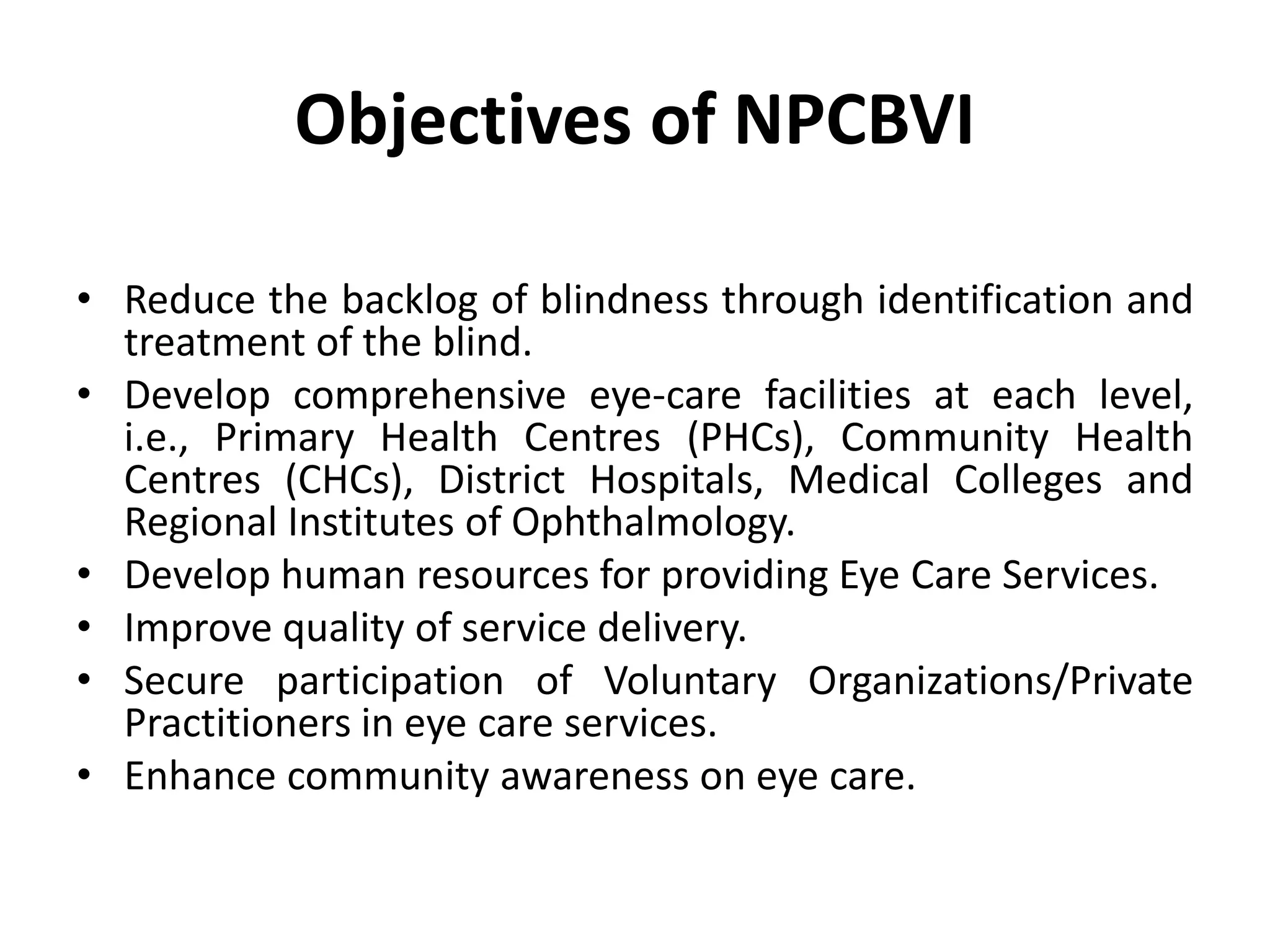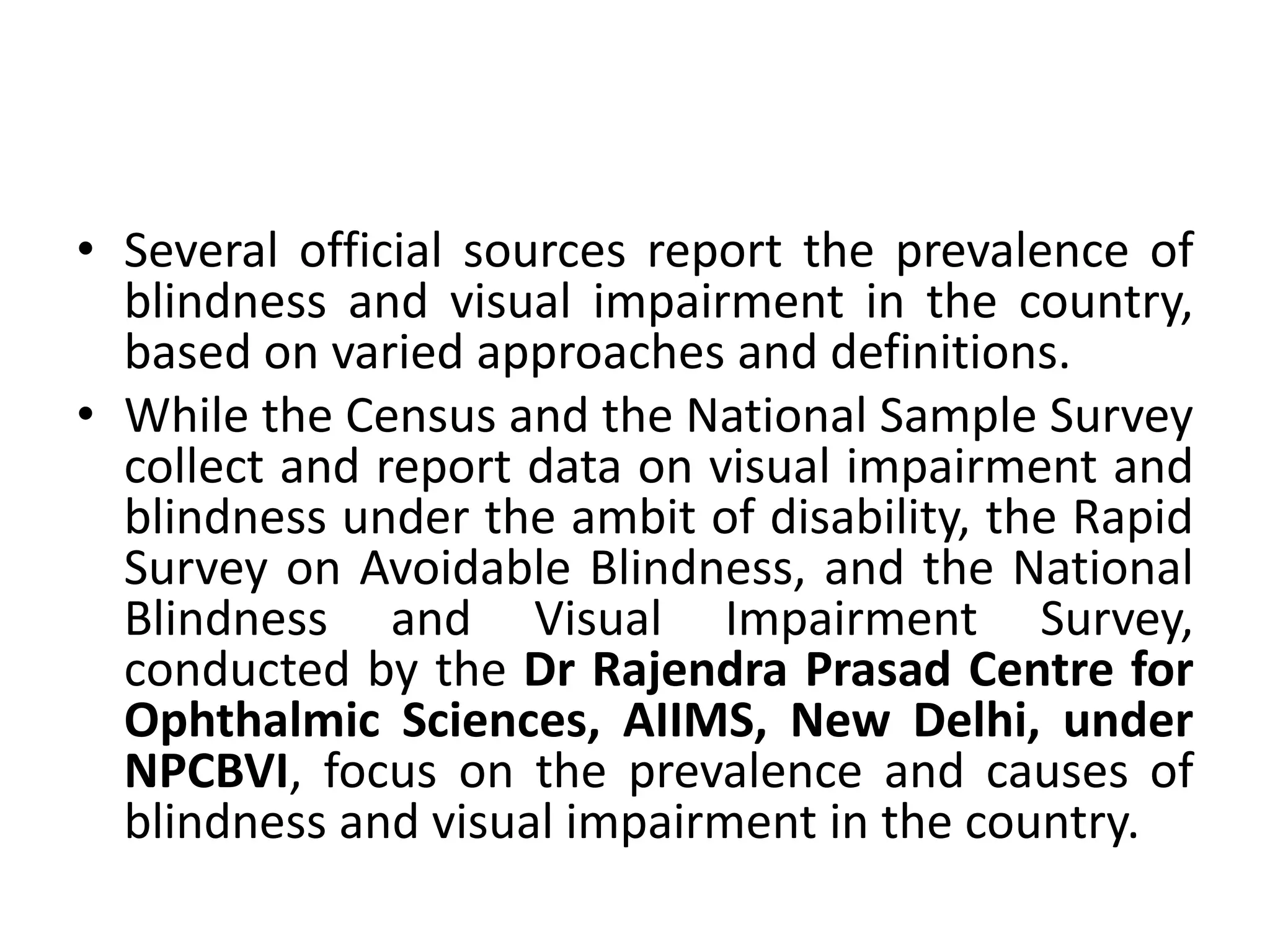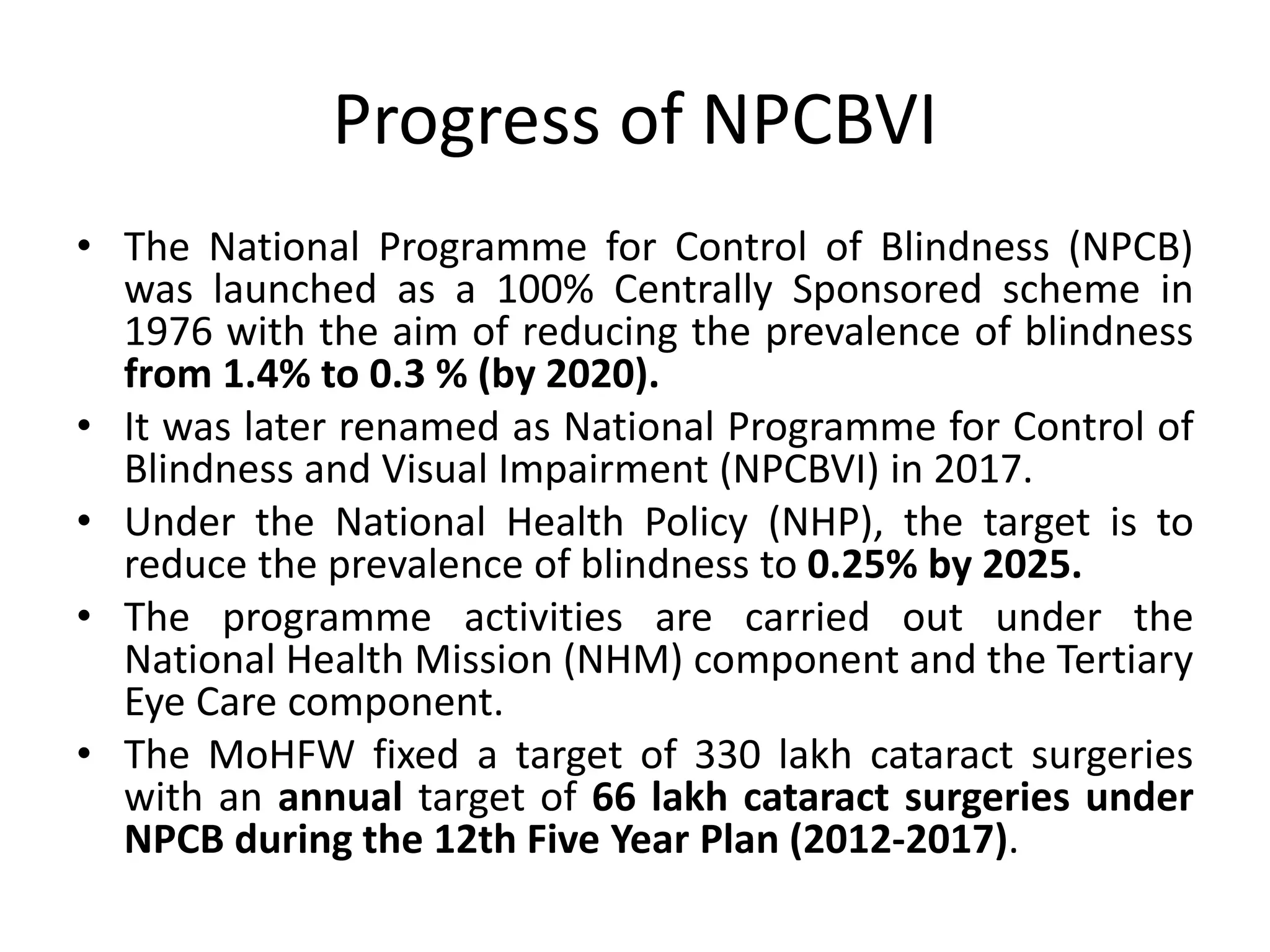The National Programme for Control of Blindness and Visual Impairment (NPCBVI) was launched in 1976 in India to reduce blindness and visual impairment. It aims to develop eye care facilities, human resources, service quality and community awareness. Statistics show progress in reducing blindness over the last decade. However, COVID-19 impacted eye care services and children's vision. The programme needs renewed focus to address backlogs and integrate with universal healthcare. Quality remains a priority as targets are expanded. Strengthening infrastructure and expanding programmes, resources and training can help advance eye health and attain sustainability goals.



























